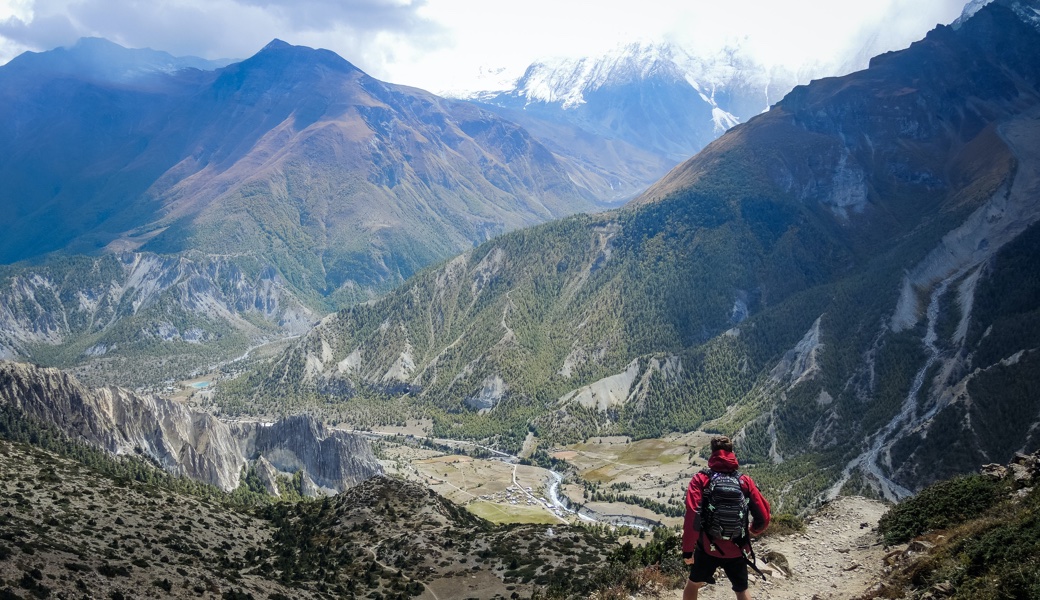
One of the biggest traps for a brand is the idea that you need to be excellent at everything. It’s fueled by a fear that our customers will only engage with us if we satisfy all their needs at a high level.
The truth though is that to create a brand that’s effective, memorable, and sustainable you have to make trade-offs. You have to identify which aspects of your customers’ needs you want to prioritize.
This is where the idea of Peaks, Pits, and Potholes is a helpful mental model.
In their book The Power of Moments, Chip and Dan Heath talk about the impact of Peaks, Pits, and Potholes as they relate to creating memories.
The premise is that we don’t remember experiences as a whole. Instead we tend to remember the best (peaks), worst (pits), and last moments of an experience. (See the peak-end rule to learn more).
Chip and Dan offer up ideas for how businesses can leverage this behavior to craft memorable moments for their customers.
This same approach can also help with the positioning of a brand.
If we break down the things that customers care about when they use our product or service, we can figure out:
- Peaks: Where your brand delivers the highest value for your customers. These are the points of difference that make the brand memorable.
- Pits: The problem areas of your brand that you should clean up.
- Potholes: Where your brand needs to be competent but not overly invested.
It’s important to recognize the role of each of these three things so that you spend your energy on the right areas of your brand.
Build Peaks

(Photo by Joshua Earle on Unsplash)
To establish a strong position for your brand, you need to be clear on how it’s different from the competition. You need to know:
- What your customers value in a product or service that satisfies their needs
- How the competition deliver on those needs
- Which aspects of your customer’s needs your brand can deliver on at a high level
That’s the essence of Peaks. It’s about recognizing and delivering on key points of differentiation.
The Peaks are what attract customers to your brand. They’re what your customers most associate with the value you provide. And they’re how your customers will remember your brand and evangelize it to others.
This is why you need to define those peaks for your brand and build them up as much as possible.
Fill Pits
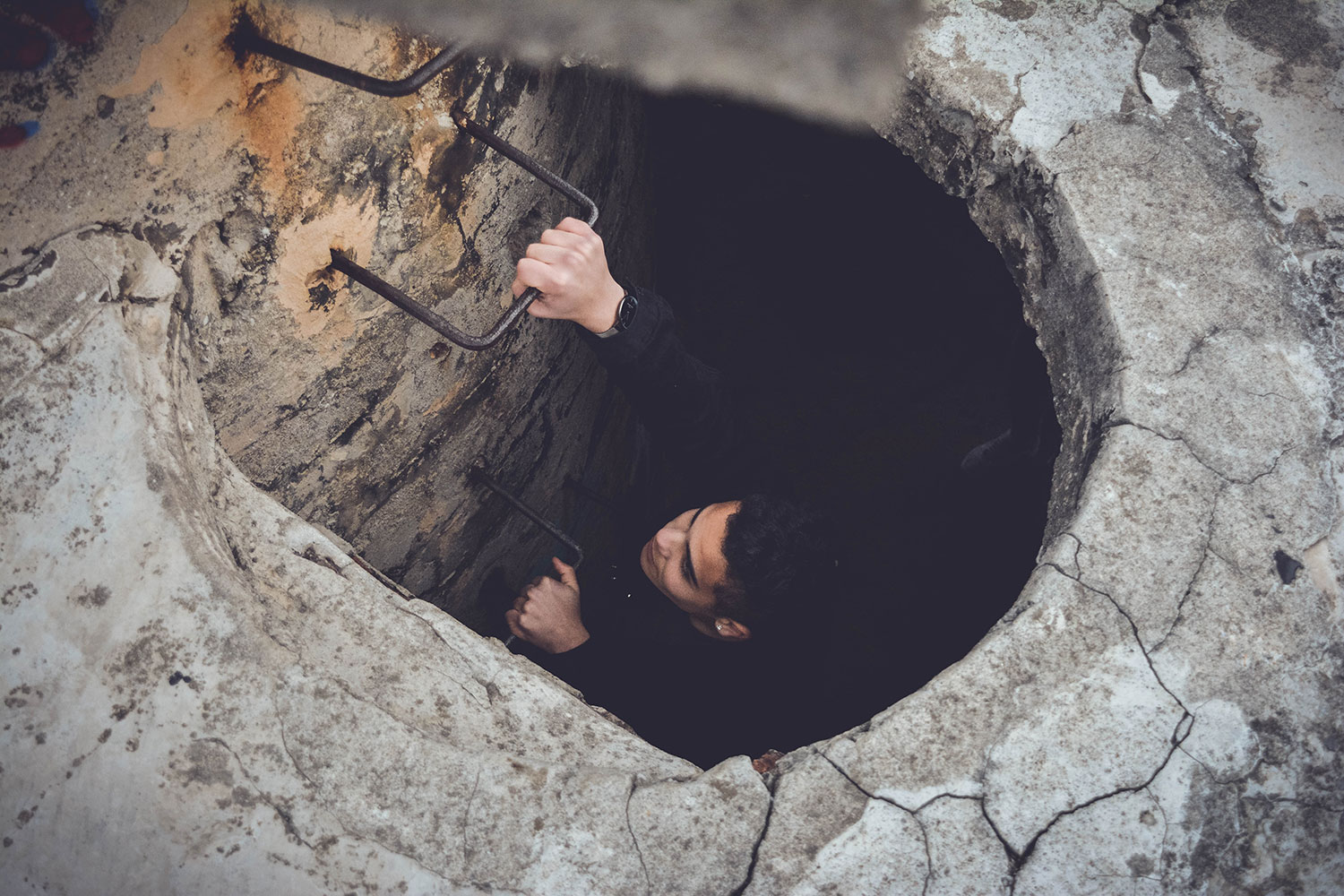
(Photo by Simone Acquaroli on Unsplash)
On the flip side of Peaks are Pits.
This is an aspect of what your customers need that your brand misses the boat on. When your brand has a Pit it can have the exact inverse effect as a Peak.
A Pit can be a showstopper for a customer to engage with your brand. It can cause an existing customer to drop you. And in some cases, it could get a customer to share the weakness with others to keep them away as well.
A Pit is a point of failure.
Because of this Pits need focused attention so that they don’t cause damage to the brand as a whole.
Leave Potholes
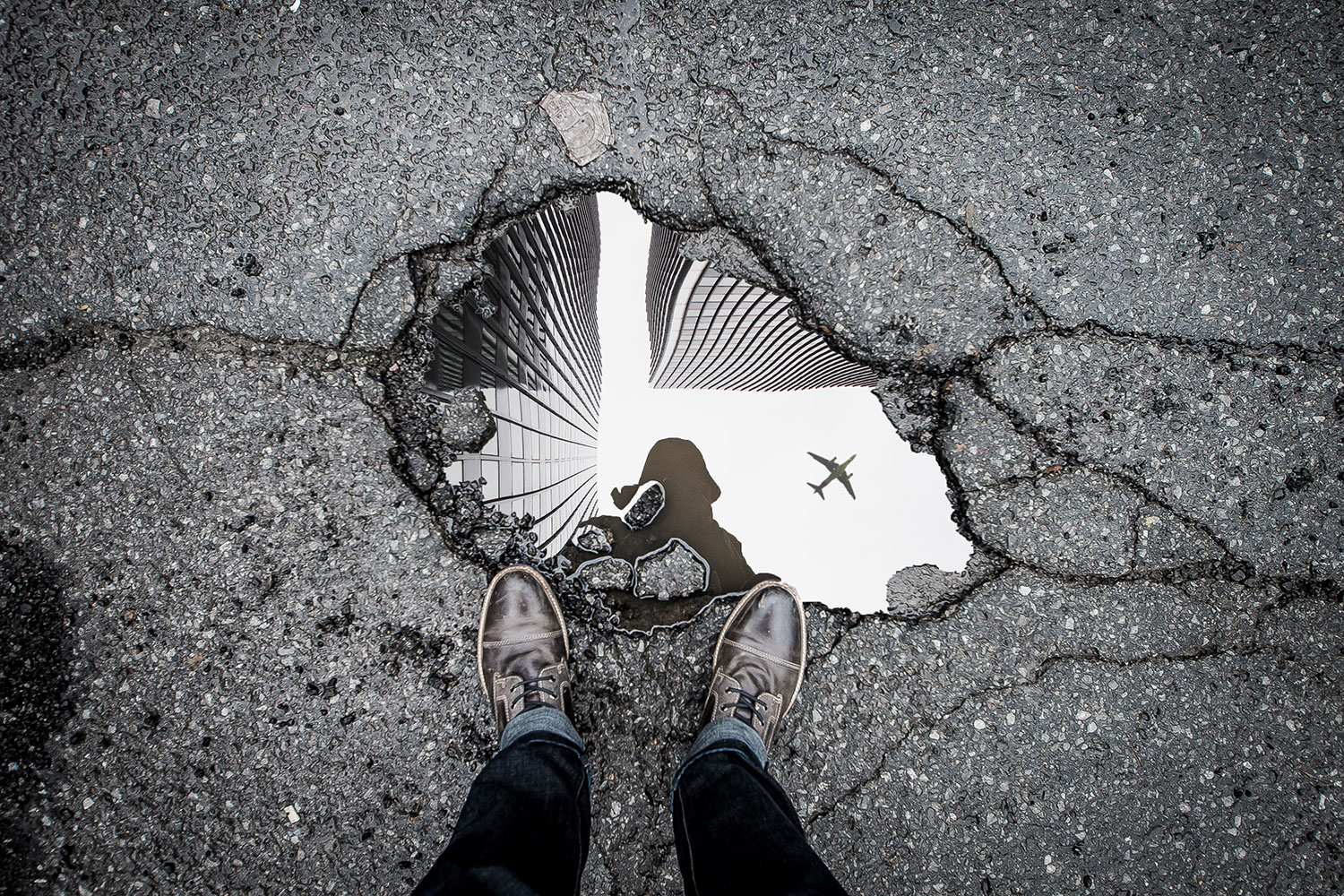
(Photo by Marc-Olivier Jodoin on Unsplash)
Potholes are the trickiest elements to judge and can be a big resource-suck for a brand.
A Pothole is an area where you’re right at the necessary level to meet the expectations of your customers.
It’s close enough to the edge where on occasion it may dip below what some customers expect. It may even raise a mild complaint at times.
But this is where the trap of Potholes exists. Because we naturally want to avoid any issue that a customer might have, it’s easy to treat a Pothole like a Pit.
It’s easy to think that a small isolated concern deserves the focus and energy to eliminate it completely.
That’s where the trap lies. It’s the collective distraction of small incidents that cause you to lose sight of the big picture. It’s when you start to dedicate too much energy on small improvements that most of your customers won’t notice.
If you spend all your time on Potholes you’ll end up with a brand that’s fine in a lot of ways but never great in any specific way.
Brand Case Study: Airbnb Vs. Travelodge
To highlight the differences between Peaks, Pits, and Potholes let’s compare Airbnb to a standard hotel chain, Travelodge.
Both brands satisfy the same core customer need of travel accommodations. But each one approaches that need from different angles.
In the chart below we grade each brand on seven Elements of Value (learn more about the Elements of Value here).
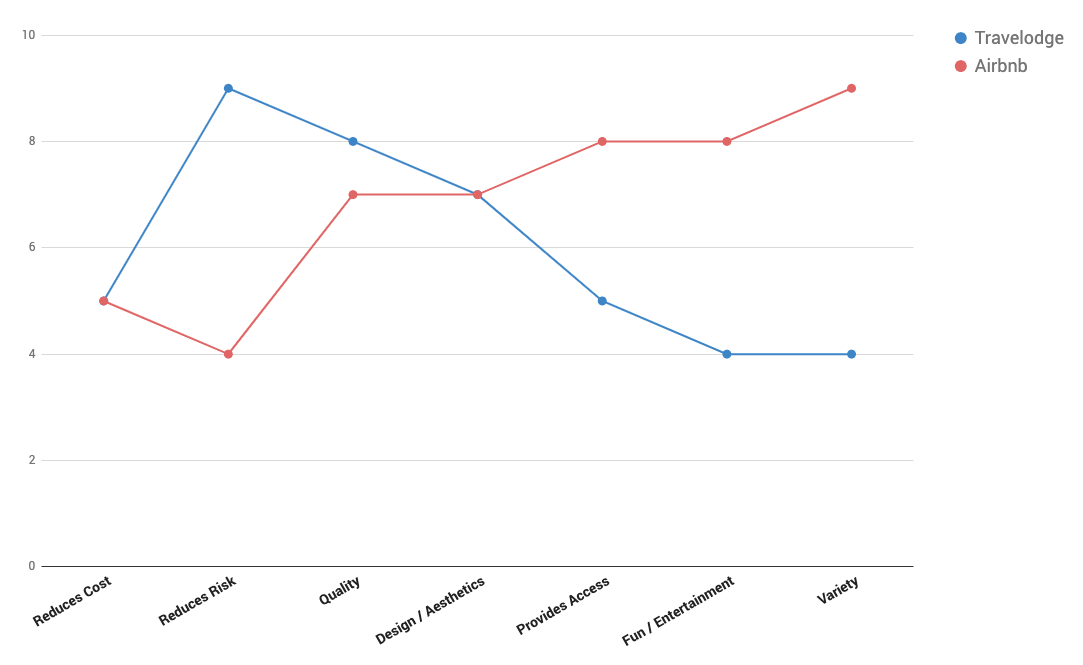
Below are example accommodations from each brand. Both are in the Los Angeles area for roughly the same price.
First up is the Travelodge hotel room at $210/night:
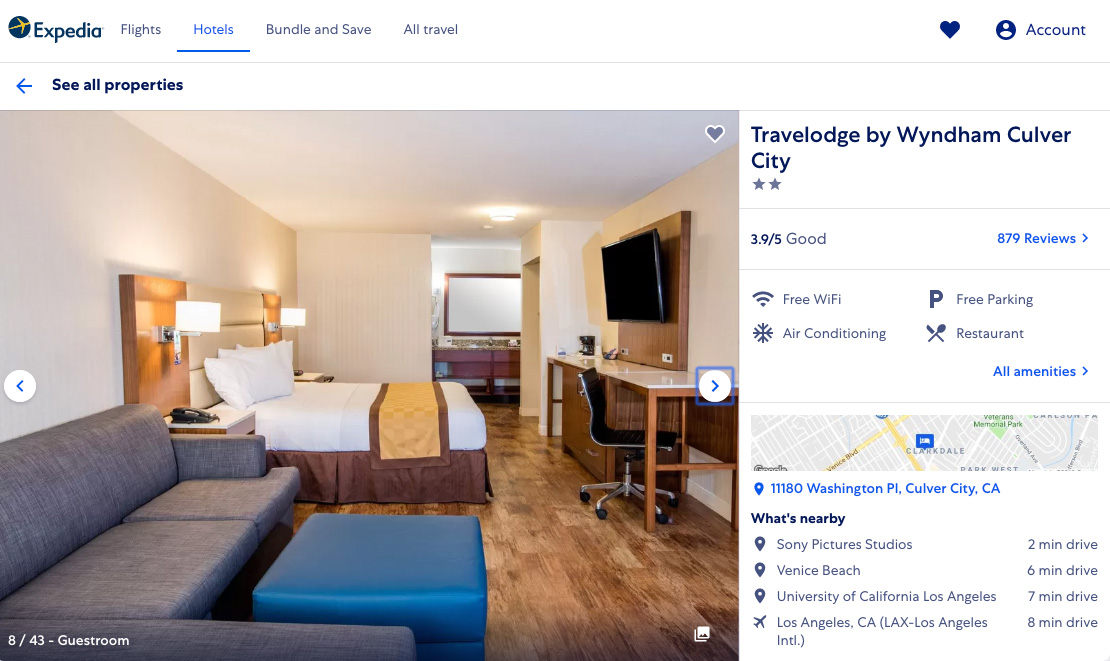
Then, there’s an Airbnb guest house at $235/night ($125 list price plus cleaning, booking fees).
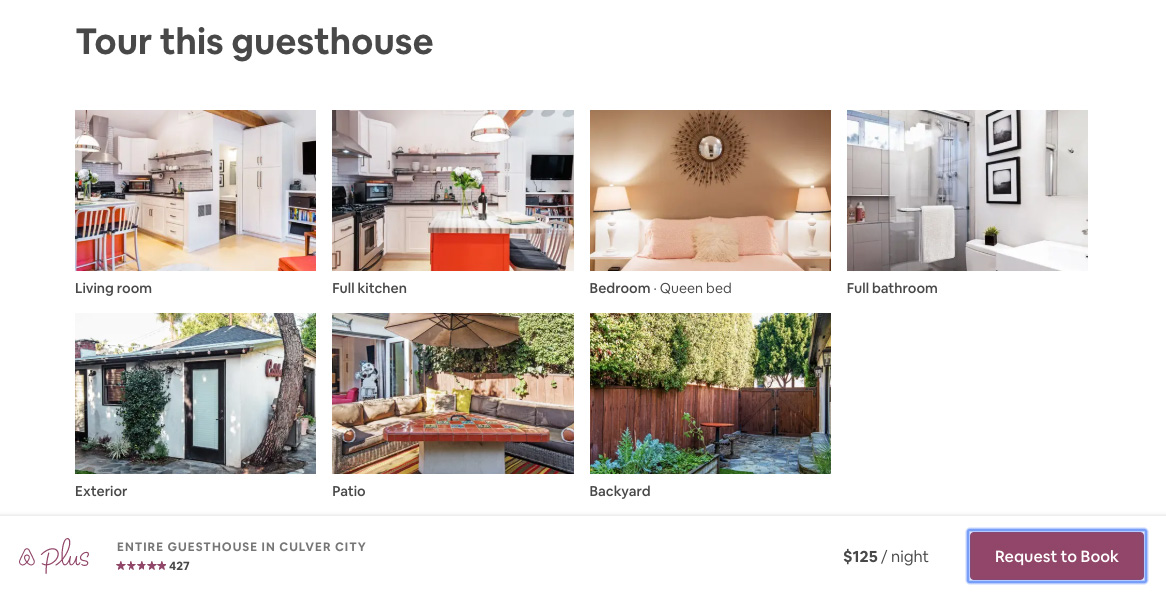
Now we can break down each brand.
Travelodge:
- Peaks: The main Peak for Travelodge is Reduces Risk. Travel can be stressful for a lot of people. Travelodge appeals to that need with lodging that’s safe and consistent. You always know what you’ll get every time.
- Pits: On the flip side of that are the low values for Fun / Entertainment and Variety. It’s important for a brand to make trade-offs in their offering, but you don’t want these to become a liability. Some small brand touches could make their cookie-cutter rooms more personal and memorable.
- Potholes: Design / Aesthetics is middle of the road. It serves its purpose but won’t ever blow anyone away. This is a good example where the brand should hold steady. Customers may not be wowed by the design, but that’s probably not why they’ve chosen to stay there. Investing more in that area may produce minimal returns and distract from building high-value Peaks and filling Pits.
Airbnb:
- Peaks: On the opposite end, Airbnb’s strength is to provide unique travel experiences. Their customers will pay the same or even more than a standard hotel room in exchange for the Variety, Fun / Entertainment, and Access of staying in a place like a private guesthouse.
- Pits: The trade-off here is Risk. For the most part Airbnb’s are very safe. But there’s always an inherent challenge with the lack of control over individual hosts. This is an area where Airbnb will have to continue to invest to avoid things like spycam stories that will turn customers away.
- Potholes: Quality and Design for Airbnb’s website and app are excellent. But for their brand, the actual homes will always come with large variations. Again, it’s not that this isn’t an area of focus for them, but they aren’t core to the unique combination of value that attracts their target customers.
Where To Invest Energy In Your Brand
In the case study above, both Airbnb and Travelodge are billion dollar companies with mature brands. They have a lot more flexibility to spend resources to elevate the minor issues of Potholes. As a result, their Potholes will continue to get smoothed out over time.
They still have to make trade-offs though. Like any brand, it’s critical for them to have strong Peaks so that customers know how to position the brand in their minds. Without that awareness it’s impossible to market around the right things.
For newer brand, resources are much more limited. Because of this, identifying Peaks, Pits, and Potholes only becomes more important.
But once you have that understanding, you can use your resources effectively to build a strong position in the minds of your customers.
Map & Fire can help your brand identify and maximize its optimal position. Download our free brand worksheets below or reach out for a consultation.


